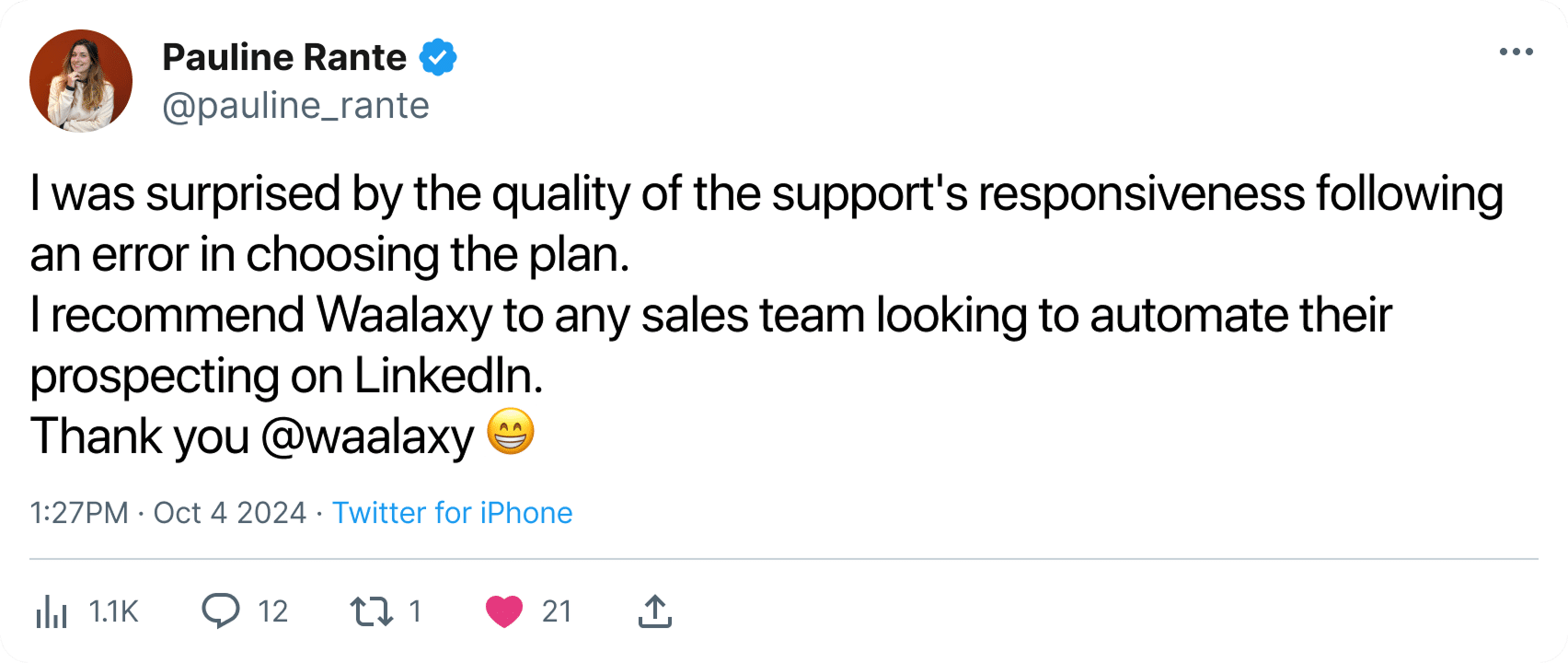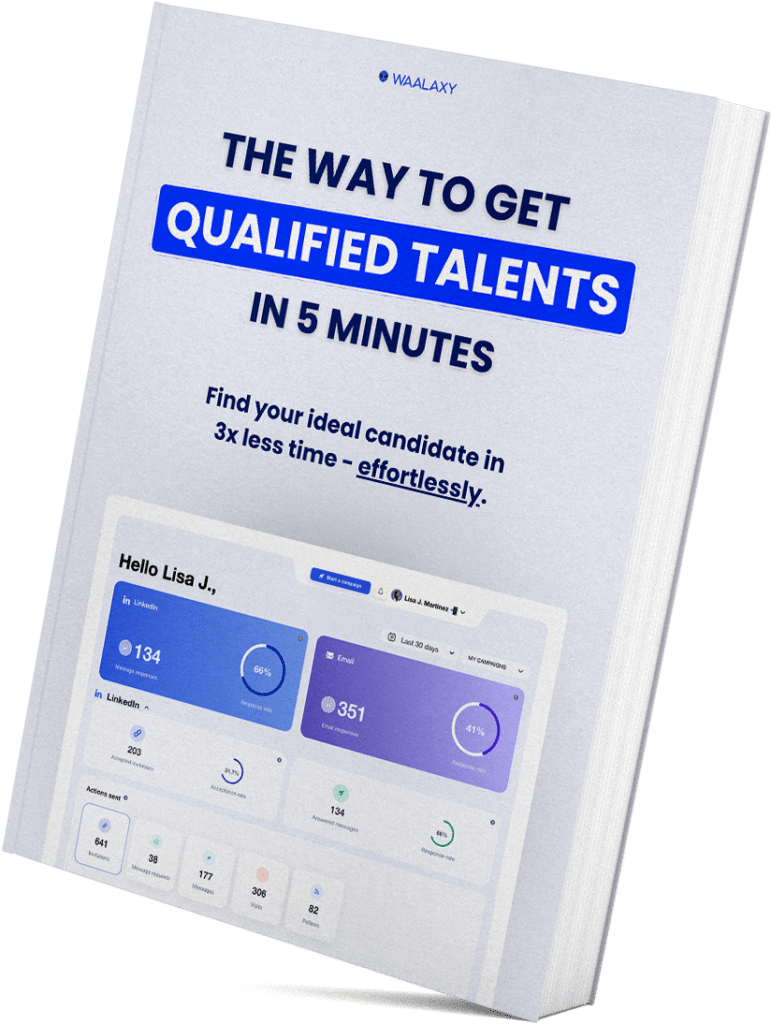- Cold email LinkedIn = LinkedIn cold message?
- 1) Define your ideal target
- 2) Optimize your LinkedIn profile
- 3) Build a multi-channel LinkedIn Outreach strategy
- 4) Send a powerful LinkedIn cold message
- 5) Follow up with a cold email
- 6) Best LinkedIn cold message Templates + Cold Email Templates
- 7) Automate your LinkedIn cold messaging and cold emailing strategy
- 7) Measure and analyze performance
- How about a recap?
A cold email LinkedIn is a bit like receiving a direct message from a stranger, except that nine times out of ten, you get rejected.
And don’t worry, that’s normal. Most people prospect haphazardly, sending out long, impersonal messages.
The result? They come across as spammers and the message ends up in the trash, sometimes before it’s even read. 🗑️
But you want:
- Attract the attention of the right people.
- Make them want to click, respond, and learn more.
- Turn those conversations into customers.
In this guide, we’ll show you how to use cold emailing on LinkedIn to create a real prospecting machine, without sacrificing your authenticity. ✨
Ready to send LinkedIn messages that convert? Let’s go! 🚀 (Reading time: 4 minutes).
Cold email LinkedIn = LinkedIn cold message?
A LinkedIn cold email, also known as a LinkedIn cold message, is not just an individual message, it is a comprehensive cold LinkedIn prospecting strategy.
It involves starting a conversation with a prospect via LinkedIn messaging in a private and professional but, above all, human setting.
This approach is an integral part of cold outreach campaigns, where the goal is not immediate sales but rather to establish an initial point of contact.
The message serves as a gateway to initiate an exchange, qualify the prospect’s interest, and then integrate them into a follow-up sequence (LinkedIn follow-up, email, or phone call).
By combining LinkedIn cold messages with personalized cold emails (addresses found via LinkedIn), you multiply your channels of interaction, increase your response rates, and create a seamless journey between social media and email.
It is this multi-channel consistency that transforms a LinkedIn cold message into a hot opportunity. 🔥
1) Define your ideal target
When you want to start a cold email LinkedIn campaign, before you even write your first message, ask yourself:
Who is the ideal person for my offer? Who am I talking to? 🤔
Prospecting doesn’t start with a tool but with a detailed understanding of your audience. Because yes, on LinkedIn as elsewhere, talking to everyone means convincing no one. 👀
Focus on three areas in your ICP:
- What are their daily frustrations?
- What are their most pressing pain points?
- What are their priority objectives or deep motivations?
Then refine according to your needs: sector, position, company size, maturity, geographic area, etc.
💡 Once you have defined your ICP (Ideal Customer Profile), you can:
- Create content that attracts the right people.
- Use prospecting tools to find your targets.
- Integrate them into an automated multi-channel sequence.
- Contact them via a cold LinkedIn message,
- Then follow up with a cold email/email marketing campaign (using information gathered through your tools or via a contact form on your website).
2) Optimize your LinkedIn profile
Every time sending cold messages on LinkedIn, your prospect clicks on your profile. And that’s where everything is decided in a matter of seconds.
An unclear profile = an ignored message, even if it’s perfect.

You have 7 seconds to make a good impression and inspire confidence, so you absolutely must have an optimized profile. Here are the essential elements to focus on in your profile:
- Your profile photo.
- Your LinkedIn banner.
- Your title and description.
- Your professional experience.
- Your education.
- Your certifications.
- Your recommendations.
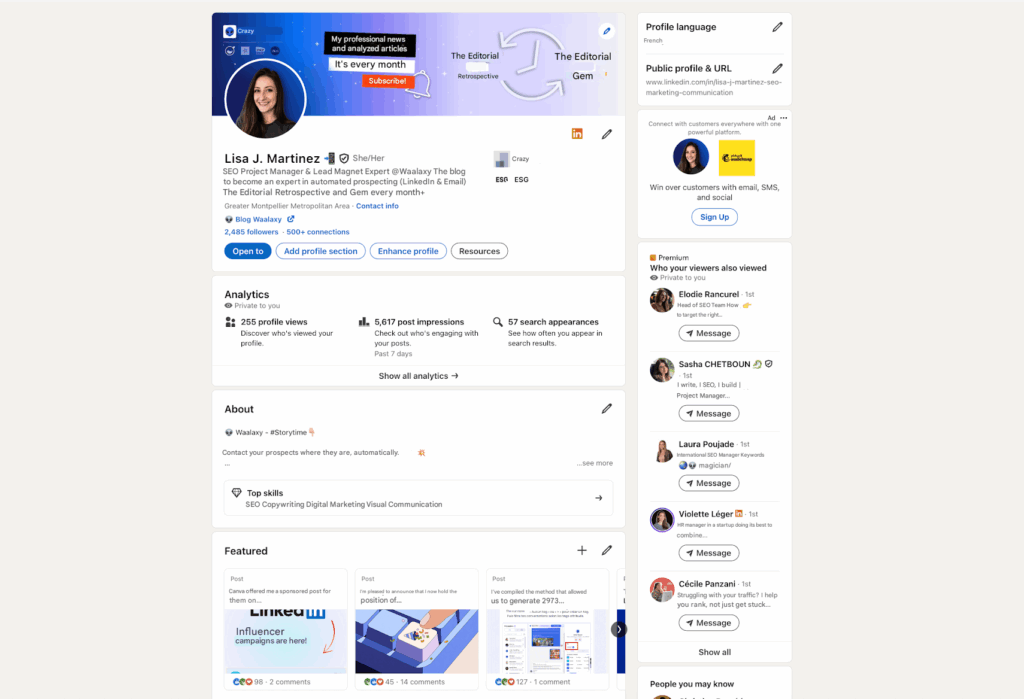
A – A professional and consistent profile photo
You need to immediately convey the following feelings to the person looking at your photo:
- 🔵 Makes them want to visit your profile.
- 🔵 Professionalism.
- 🔵 Enthusiasm.
The goal is to create consistency between the company and your appearance. So, adapt the style and choose a photo that matches your company’s values (no selfies or webcam photos).
Smile too. This will make you appear much more friendly and open to discussion. 😃
Today, there are many tools available to generate an AI LinkedIn photo to use on your profile.
B – An impactful banner
It must be consistent with your company’s graphic charter: colors, typography and fonts, values, tone, and commercial message.
An excellent LinkedIn banner must meet these four criteria (taken from the AIDA method). 👇🏼
| AIDA stage | Objective | Practical advice |
|---|---|---|
| 🎯 Attention. | Catch the eye. | Use bright colors and large text to spark curiosity and encourage people to learn more about you. |
| 💡 Interest. | Spark interest. | Clearly display your expertise, your industry, and the solutions you offer. The goal: create an immediate connection. |
| ❤️ Desire. | Reinforce your perceived value. | Highlight the benefits you bring, your results, your positioning, or your authority in your field. |
| ⚡ Action. | Encourage interaction or contact. | Add a visible call to action, for example, « Follow me in one click, » « Talk about your project, » or « Click on the link below. » |
C – A clear title + an engaging description
Your headline should answer one question: “How can you help your ICP?”
Keep it simple and direct; for example, “I help B2B SaaS companies to make 30%+ more in their lead generation through cold LinkedIn outreach.”
You can also add a call to action inside. Ideally, the same one included in your LinkedIn banner.
Don’t forget your LinkedIn description (also called your “LinkedIn summary“), which should also be optimized.
To write these two essential elements of your profile effectively, use storytelling techniques and the AIDE formula with our top tips below.
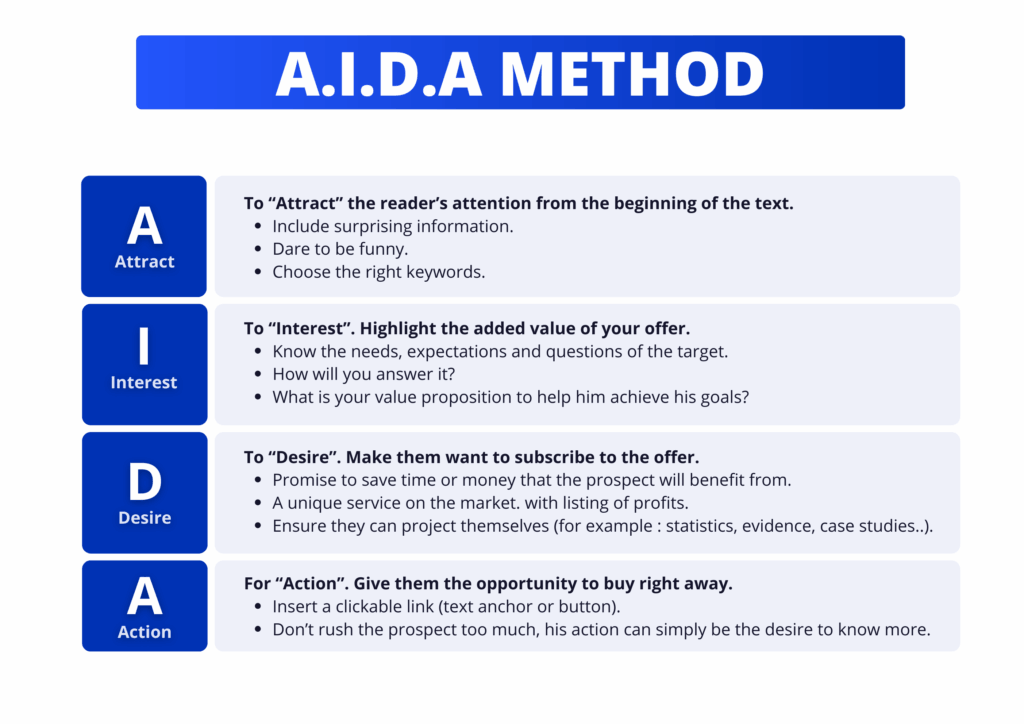
D – Your experiences = proof of legitimacy
Before launching a LinkedIn cold message strategy, you need to prove to your prospects that you are an expert in your field. ⭐
This is reflected in your professional experience, so don’t hesitate to be thorough:
- List all the companies you have worked for if you are an employee.
- List all the companies you have worked with if you are an entrepreneur.
- Mention all the assignments you have been given/completed.
- Highlight concrete and measurable results for each assignment.
In short, a good LinkedIn profile is a mini sales pitch.
E – Training and certifications
Your diplomas, licenses, and training are also a good way to showcase your strengths and build trust with your prospects when you’re prospecting. 💥
- The schools you attended.
- The level of your studies (license, BTS, DUT, bachelor’s, master’s, etc.).
- Your exam results.
No need for a master’s degree; just show your progress and expertise.
We also recommend highlighting any certifications, recommendations, and skill endorsements you have received on your LinkedIn profile.
3) Build a multi-channel LinkedIn Outreach strategy
A LinkedIn cold message campaign should never be isolated. Today, your prospects are being solicited everywhere, navigating between email, social media, webinars, podcasts, and ads.
So why limit yourself to a single channel? 👀 The key is to align your channels to build a good acquisition system that converts strangers:
- 1️⃣ Discovery: The person hears about you for the first time.
- 2️⃣ Evaluation: They compare you to others and start to take an interest in your solution.
- 3️⃣ Decision: They are ready to take action.
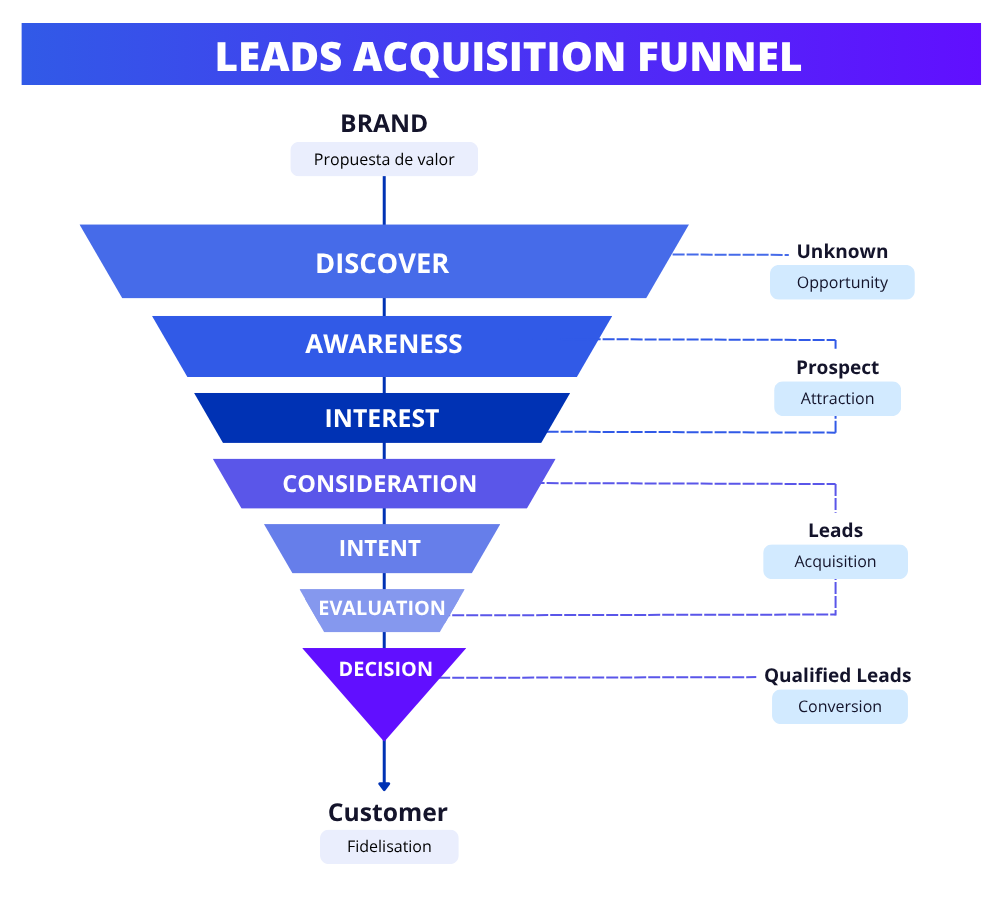
Your mission is therefore to guide each prospect through this funnel, with content and messages tailored to their level of maturity. 📊
Of course, multichannel cold LinkedIn marketing is not about bombarding prospects on all fronts. Rather, it’s about creating a seamless and consistent experience, where each touchpoint reinforces your message. 💣
The ideal plan for your cold email LinkedIn strategy? 👉🏼 Connection 🔁 LinkedIn cold message/LinkedIn cold email 🔁 Email enrichment 🔁 Email follow-up.
Example of a simple journey:
The person sees a post on LinkedIn ⭢ they click on your profile.
You send them a personalized LinkedIn invitation ⭢ they accept.
You share high-value content with them ⭢ they download a lead magnet.
You follow up with an email containing a targeted offer.
4) Send a powerful LinkedIn cold message
Without an effective message, all of this will be useless.
To write a good cold message LinkedIn (or cold email LinkedIn 🥶) that will become a real conversion lever:
- Attract attention without being clickbait.
- Show that you know your target audience to create a sincere and personalized connection.
- Keep your message short, be concise, clear, authentic, and focused on the value you bring.
- Give a clear reason to respond and the desire to continue the discussion elsewhere (email, call, demo, etc.).
💡 Tip: A/B test your hooks and CTAs to identify what triggers the most responses, and consider using tools to help you.

As you can see, a good message is not just a simple copy-paste of a sales script. Don’t fall into the cliché of “I hope you are well” or “I am contacting you.”
If you’re still unsure, here’s the ideal structure for a good LinkedIn message. 👇🏼
| Step | Objective | Example |
|---|---|---|
| 🧠 Hook. | Create a connection or spark curiosity. | “I came across your post on B2B growth, very accurate.” |
| 👀 Context. | Why you are contacting this person specifically. | “I work with SaaS marketing managers like you.” |
| 🎁 Immediate value. | What you can offer them, no bullshit. | “I have a free guide that summarizes 5 strategies that work.” |
| 📬 Call to action. | Encourage a response, without pressure. | “Would you like me to send it to you here?” |
Of course, a successful cold email LinkedIn strategy takes time and practice, but we’re here to explain everything and to give you some effective LinkedIn message templates!
5) Follow up with a cold email
Follow-up is THE key to an effective (yet underestimated) cold email LinkedIn strategy.
It is often the email sent after an initial LinkedIn message that triggers a response.
💡After an initial contact via a LinkedIn cold message, following up with a personalized email can increase your response rates by an average of 35%.
So, once you’ve started a conversation on LinkedIn, take the next step: use an enrichment tool (email finder) to automatically retrieve your prospects’ professional email addresses from their LinkedIn profiles.
The goal? To get out of the LinkedIn message thread and appear directly in their professional inbox, to continue the conversation where it is most likely to be read (this is the ultimate advantage of multichannel).
And to be sure of getting a response, you need to write a good follow-up message:
- It should be short, clear, and direct.
- It should refer back to the context of the LinkedIn cold message.
- Rephrase the value proposition (adding bonuses, testimonials, etc. if necessary),
- Add a professional signature.
- Useful resource (attachment, hyperlink, calendar invitation, etc.).
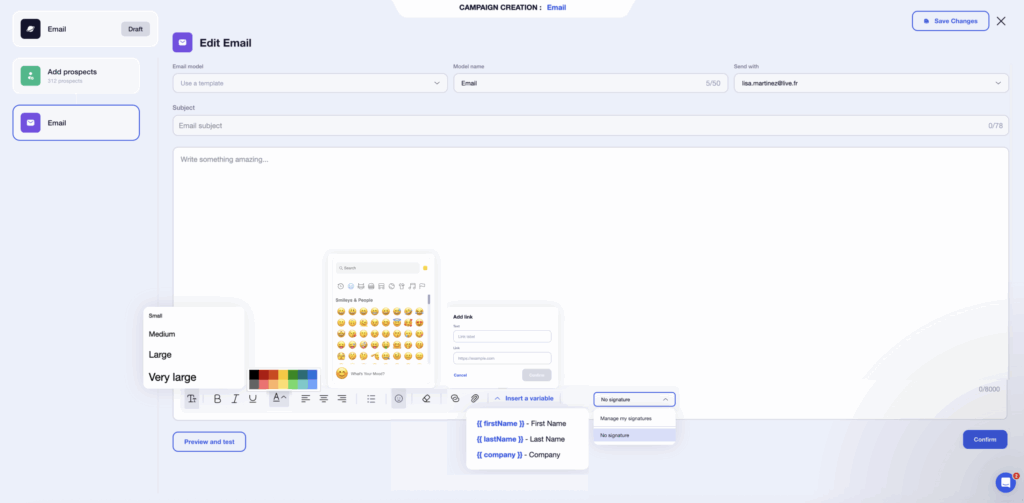
💡 Always combine personalization and consistency: one well-written follow-up is worth ten new cold messages.
To help you, here are 25+ cold prospecting email templates you can reuse.
6) Best LinkedIn cold message Templates + Cold Email Templates
Crafting a message that grabs attention and drives replies is the hardest part of cold outreach on LinkedIn, but also where small tweaks bring massive results. Below are three proven LinkedIn cold message and cold email templates you can personalize and plug into your next campaign.
Problem → Curiosity (first touch)
When: First cold touch to spark a reply without pitching.
Why it works: Pinpoints a real pain + short question = easy response.
#1 LinkedIn Cold Message Template
Hey {{FirstName}}, as {{Role}} at {{Company Name}}, what’s the biggest blocker to {{goal}} right now? I’ve got a simple idea (10 mins max). Open to a quick chat here?
#1 Cold Email Template—Subject: What if {{goal}} took 10 minutes?
Hi {{FirstName}},
In roles like yours at {{CompanyName}}, I often see {{pain}} slowing down {{goal}}. We use a lightweight approach (≤10 mins) that unlocks {{specific benefit}} without changing tools.
Want a quick overview? I can send 3 actionable steps or a brief example.
— {{Signature}}
Value-first (lead magnet / resource)
When: Prospect is problem-aware but not ready to meet.
Why it works: You give value first → low-friction customer engagement.
#2 LinkedIn Cold Message Template
Hey {{FirstName}}, I pulled together 5 tactics that drove {{result}} in {{timeframe}} (real examples). Want me to send the 3-minute PDF?
#2 Cold Email Template—Subject: 5 tactics for {{result}} (3-minute PDF)
Hi {{FirstName}},
If {{pain/goal}} is on your radar, here’s a short guide: 5 tactics and a checklist to get {{result}} in {{timeframe}}.
👉 {{Link}}. If helpful, I can share a version mapped to {{CompanyName}}.
— {{Signature}}
Short, choice-based follow-up
When: 3–5 days after your first touch or resource share.
Why it works: Pattern break + binary choice = quick decision.
#3 Cold LinkedIn Message Template
Quick nudge, {{FirstName}}:
Prefer (A) the example tailored to {{CompanyName}}, or (B) a 10-minute LinkedIn cold calling to see if it fits? Happy to adapt
#3 Cold Email Template – Subject: A or B? (promise I’ll be brief)
Hi {{FirstName}}, What’s easiest?
A. I’ll email a {{CompanyName}}-specific example with 3 steps, or
B. We book a 10-minute cold call LinkedIn (calendar: {{CalendlyLink}}).
If now’s not ideal, I can circle back with a 1-page summary next month.
— {{Signature}}
These best LinkedIn cold messages and cold email templates are simple, adaptable, and proven to work across industries.
Use them as a foundation : personalize each message with real insights about your prospect, and combine LinkedIn DMs with short, value-driven emails for maximum impact.
The goal isn’t to sell on first contact; it’s to start a conversation that feels natural, relevant, and worth continuing.
7) Automate your LinkedIn cold messaging and cold emailing strategy
Prospecting manually works, but it’s time-consuming. Too many cold emails to send, not enough time.
If you want to send a large volume of cold LinkedIn messages, it’s best to use 📩 an automation tool to make your approach scalable without dehumanizing it.
We recommend using a tool such as Waalaxy, with which you can:
- Scrape LinkedIn profiles and auto-import them (from connections, posts, comments, LinkedIn groups, etc.) into an integrated CRM.
- Choose from hundreds of ready-to-use automated LinkedIn and Email action sequences (profile visits, invitations, messages, etc.).
- Visit profiles and send automatic LinkedIn connection requests/invitations (or LinkedIn cold DMs).
- Automatically send and customize each message/email (customization variables, signature, clickable links, pre-saved cold outreach templates and preview, testing, emojis, text formatting and layout, add up to 4 attachments of up to 20MB max, etc.),
- Automatically enrich your prospects’ email addresses for multi-channel follow-ups (more info below)
- Test multiple variants (A/B testing),
- Track your performance in real time.
Example sequence: Day 1: LinkedIn connection → Day 3: cold LinkedIn message → Day 6: follow-up email.
⚡ All without risking having your LinkedIn account blocked.
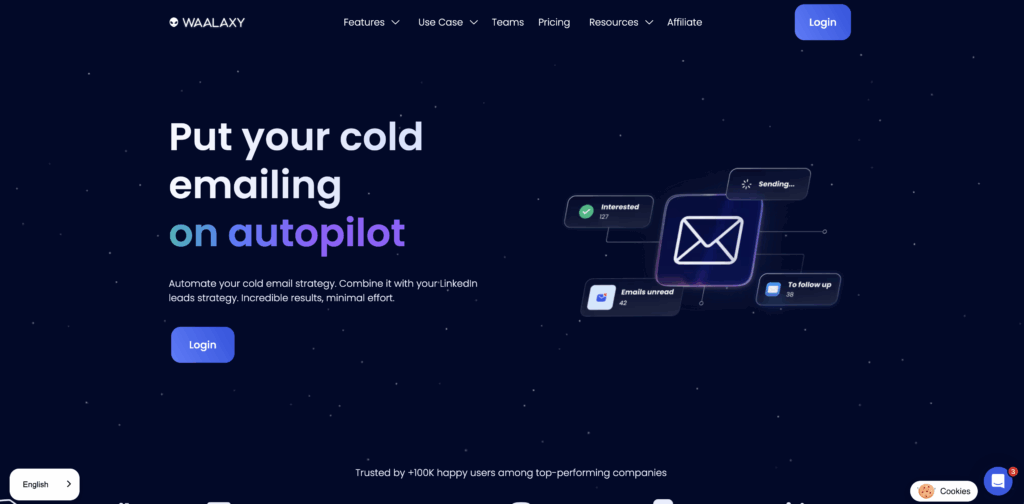
👌 Everything is super simple with Waalaxy, and the same goes for enrichment, which is done directly from a LinkedIn profile with just one click:
- On average, 60% more professional email addresses are found with Waalaxy’s Email Finder.
- 15 integrated data sources (in a single tool) to enrich your prospect lists with data more complex than email addresses.
- Triple verification (Dropcontact, Bettercontact, Fullenrich) for emails delivered at +99%.
- Track the open and response rates of cold mailing campaigns from the dashboard.
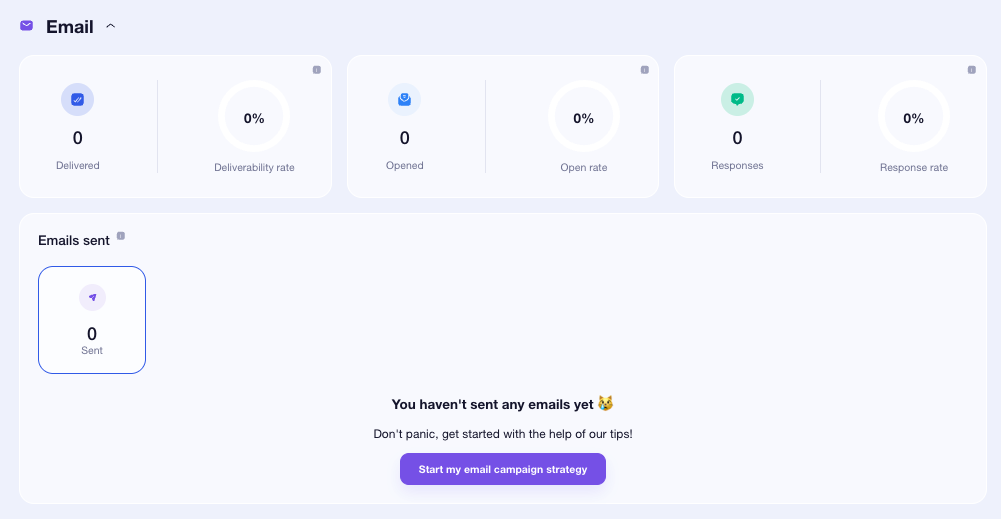
We have the best prospecting database enrichment rates on the market, providing the highest number of reliable results in the shortest time.
If Waalaxy can’t find your prospects’ professional email addresses, no one can.
Ready to launch your first prospecting sequence on LinkedIn + Email?
7) Measure and analyze performance
The famous question we all ask ourselves after spending hours putting a strategy in place: does it really work? 👀
Without data, it’s impossible to answer. Without analysis, you risk continuing to send messages that don’t convert.

To do this, let’s take a look at my top 5 KPIs to track. ⬇️
| Indicator | What it measures | Why it matters |
|---|---|---|
| 💌 Acceptance rate. | % of connection requests accepted. | Measures the relevance of your marketing targeting + introductory message. |
| 📬 Response rate. | Percentage of prospects on LinkedIn who responded. | Evaluates the quality of your first message or follow-up email. |
| ✅ Open rate | Percentage of contacts who opened an email | Evaluates the quality of your email subject line and opening sentence. |
| 🔁 Effective follow-up rate. | % of responses obtained after a follow-up. | Checks whether your follow-ups provide real value. |
| 📈 Conversion rate. | Percentage of prospects who became customers (or appointments). | Shows whether the strategy is generating concrete business. |
| 🧪 Variation rate (A/B). | Comparison between two messages/tests. | Used to optimize your approach through iteration. |
How about a recap?
The cold email LinkedIn strategy is much more than just a cold message.
It’s a comprehensive LinkedIn cold outreach strategy that combines personalization, follow-up, and intelligent automation.
Remember that sentence in the introduction? “LinkedIn cold emailing is a bit like being in a stranger’s DMs, except that 9 times out of 10, you get rejected.“
Well, now you have everything you need to be one of the 1 in 10 who manage to turn a cold email LinkedIn into a qualified conversation. 🃏
- Define your target audience.
- Optimize your profile.
- Write a compelling LinkedIn message.
- Follow up intelligently by email.
- Automate your prospecting.
- And measure your results.
Cold emails on LinkedIn have never been the problem.
The real problem is those who do it any old way.
The goal is not to automate 100%, but to free up time so you can focus on the conversations that matter.
Thanks to our advice, your LinkedIn messages and emails will no longer fall on deaf ears; they will spark conversations that sell.
It’s up to you to apply them to show that a well-executed strategy of cold messaging on LinkedIn is anything but spam. 😉
Frequently asked questions
🏁 To conclude, here are the answers to the most frequently asked questions on the subject. 👇🏼
Differences between LinkedIn cold messages VS LinkedIn cold emails VS cold emails VS LinkedIn InMail?
A LinkedIn cold message and a cold email LinkedIn refers to the same approach: a message sent cold via LinkedIn messaging, after or without a connection.
A LinkedIn cold InMail message, on the other hand, is a paid message feature (often perceived as more commercial) only available with a LinkedIn Premium account, allowing you to contact LinkedIn users without being connected thanks to InMail credits.
Finally, the classic cold email is sent from an external email account (Gmail, Outlook, etc.), outside of LinkedIn.
👉 The ideal approach? Combine LinkedIn cold messages and cold emails in a multi-channel strategy to maximize your response rates.
How to cold message on LinkedIn for a job?
Okay, so maybe you don’t want to find prospects or potential customers on LinkedIn. Maybe you just want to find your next career opportunity.
You should, of course, tailor your message to the position you are targeting, but here are a few tips:
- Be confident ❤️.
- Grab your target’s attention in the first two lines.
- Tell them exactly why you are contacting them, and prospect.
- Personalize your message with concrete references.
- Show that you know things about the company.
A good LinkedIn cold message for job opportunities is 70% personalization (important to stand out, because recruiters receive many applications) and 30% confidence.
How many LinkedIn cold messages or cold emails should you send?
At Waalaxy, we conducted a statistical study that revealed that the average number of touchpoints in a multichannel Waalaxy campaign is 2-3.
But, on average, here is our advice:
- 2 to 3 LinkedIn messages spaced 2 to 4 days apart,
- Then 1 to 2 follow-up emails if there is no response.
Beyond that, you risk coming across as pushy. Test different frequencies depending on your audience.
There you have it! Now you know everything there is to know about the most effective cold email LinkedIn/LinkedIn cold message methods! 🚀


